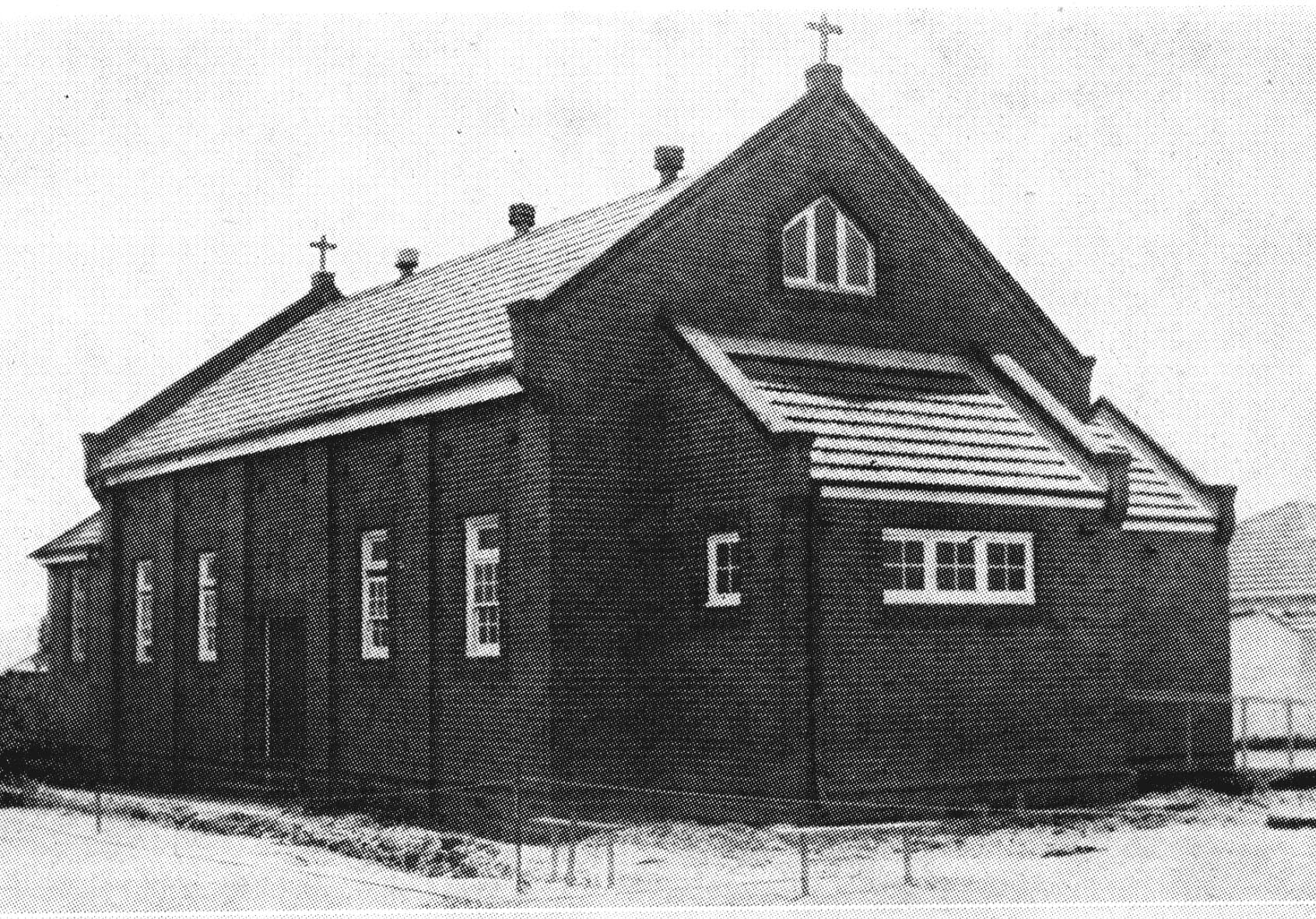IMMACULATE HEART OF MARY PARISH SEFTON 1948
For over 60 years, the Catholic parish community of Sefton and Chester Hill have been under the pastoral care of the Religious Congregation,
The Missionary Oblates of Mary Immaculate, commonly referred to as ‘The Oblates’,
now under the care of the Catholic Archdiocese of Sydney.
The Immaculate Heart of Mary Parish, Sefton is a well established and close knit community of the Catholic Church within the Archdiocese of Sydney.
Dear Parishioners
As we humbly begin to establish our parish back again due to an unforeseeable future. We warmly invite you to a special project we are working on #OurHistory. Over the next few days we will be constructing this page to mirror what
was 1949 – 2020. Keep in contact to keep up to date on our finish !! ” We are not makers of History. We are made by History. ”
UNDER CONSTRUCTION
immaculate heart of mary ( 1948 ) – sefton
Our History
From humble beginnings of 1948 comprising a small brick hall which was used as a Mass Centre and had previously been used as a dance hall and picture theatre, together with a fibro dwelling used as presbytery located in Chester Hill, the Immaculate Heart of Mary Parish, Sefton, grew and flourished under the care of the religious order of priests known as the Oblates of Mary Immaculate.
The history of I.H.M Sefton is one that closely mirrors the development of the adjoining suburbs in which the parishioners resided. From those early days the Parish struggled and expanded during the 1950’s and 1960’s in response to the demands placed on it by the increasing numbers of new parishioners, mostly of whom were “battlers” and were attempting to establish a home for their families.
Those days of hardship when money was hard to come by and the subsequent development of the pairsh is a story of co-operation, resourcefulness and hard work whereby the priests and parishioners shared together their common burder “for the glory of God”
1934 – 1952
Introduction
The original Church-hall in Kerrinea Road Sefton New South Wales Sydney Australia was built around 1934 and purchased by the Catholic Church in 1935. It was originally part of Bankstown parish. This hall eventually become the Immaculate Heart of Mary church and was substantially modified with extensions in 1963-64. To the right was the presbytery purchased in 1952

before the oblates
Chapter
The history of the Catholic parish of Sefton needs to be viewed from the wider perspective of the history of the Sefton district and its surrounding areas. Until well into the 1950’s the area was relatively sparsely settled with many poultry farms and some orchards being the main industries associated with the area. The railway had come to Sefton and Chester Hill in 1924 and there was a gradual expansion of settlement into the district as people moved out from the inner suburbs of Sydney looking for cheaper land on which to build houses.
There had been some housing development in pockets of the district after World War I as part of the soldiers resettlement scheme but it was not until the end of the Second World War that the area could be seen as growing by “leaps and bounds”
In 1919 Mass was celebrated for the first time in a hall in Third Avenue, Berala by Father P. McElligott. This hall was transferred to Kingsland Road Berala about 1928. Although still in Lidcombe parish, Berala soon became self-supporting. Sefton was originally part of Bankstown parish and the faithful of the district were faced with going to Mass either at Bankstown or Berala.
1934
Father Maurice Kennedy, administrator of Bankstown parish in the absence of Dr Eris O’Brien (later to become Archbishop of Canberra-Goulburn), Parish Priest of Bankstown, who was overseas at the time, celebrated the first Mass in a hall on the “heights” of Sefton in Kerrinea Street. This hall was a long time building, there being much delay in its completion… the hall apparently built by a Mr Perc Jeffries for Robert Harley Real Estate and was completed in 1934.
1935
As times went on Dr O’Brien purchased the building. This building was home to picture screenings each week, the screen being at the front of the hall. The back of the hall contained a raised stage area about half a metre height which was used for the Dress Circle. On many occasions, posters were still displayed in the hall on the Sunday morning following Saturday night’s picture screening. This prompted one priest to remark after seeing the poster, “Who’s appearing after me?”
01 . 11 . 1948
Father Andrew McCusker OMI
Father Andrew McCusker OMI who founded the Oblate Parish of Sefton on 01 . 11 . 1948.
OMI
Missionary Oblates of Mary Immaculate OMI represented by the then Provincial, Father A. McCusker, arrived in Sydney for an appointment with Cardinal Gilroy with the express purpose of the Oblates establishing themselves in NSW and founding a parish within the Archdiocese of Sydney.
All Saints day
The choice for the Oblate Fathers was narrowed down to two areas: Carlingford and Sefton. Father McCusker chose the Sefton area which was then taken away from Berala and on All Saints Day, November 1st 1948, Sefton Parish officially came into being.
1949 – 1954
The Breslin Years
In those early years, the only transport around the parish for the priests was either by one bicycle or by walking. However, very soon after Father Breslin arrived, he became determined to obtain a car and he had worked out an ingenious plan to ensure that he got one.
Needless to say Father Breslin purchased the 1929 Plymouth nicknamed the car “Elizabeth”. Father Daniel Breslin, Sefton’s first Parish Priest, was by all accounts an absolutely unique person. He had a rare enthusiasm and dedication to planning and implementing tasks which he feld needed to be carried out in the parish.

1950
In may 1950, Father Fan saw the need for a Primary School and so the first steps were taken to establish a school for children of the parish when two Sisters of St Joseph from the Lidcombe community, Sr Philip Neri and postulant Sr Patricia Mary Brew arrived to begin teaching in the Church Hall.
Cardinal Gilroy officially blessed and opened the first classroom block of IHM School Sefton on 26 August 1951. The incomplete building is very much in evidence in the photograph. The old church hall is to the right. Father Breslin is seated to the left of the Cardinal.

” Equipment of a parish today presents great difficulties. It is an extremely expensive undertaking to construct churches, schools, presbyteries and convents, and is a work completed only with great difficulty. But Father Breslin has been so active that you cannot help but feel that he has been not only a zealous and apostolic priest, but a very capable administrator “
– His Eminence Cardinal Gilroy 26 August 1951
2018 – 2020
Our Parish
In 2018 the Parishes of Immaculate Heart of Mary Sefton and Sacred Heart Villawood are now under the care of the Catholic Archdiocese of Sydney.
PARISH PRIEST
Very Reverend Maurice T. Thompson Episcopal Vicar, Parish Priest
Most Rev. Archbishop Anthony Fisher has appointed Very Rev. Fr Maurice T. Thompson Episcopal Vicar and Parish Priest of St Christopher’s Panania and St Luke’s Revesby Heights to Immaculate Heart of Mary Sefton and Sacred Heart Villawood.
PHONE
(02) 9644 4026
office@ihmsefton.org.au
WEBSITE
www.seftoncatholicchurch.org.au
ADDRESS
6 Kerrinea Road, Sefton
NSW 2162 SYNDEY AUSTRALIA
Lorem ipsum dolor
The Secret of Success
Lorem ipsum dolor sit amet, consectetur adipisicing elit, sed do eiusmod tempor incididunt ut labore et dolore magna aliqua. Ut enim ad minim veniam, quis nostrud exercitation ullamco laboris nisi ut aliquip ex ea commodo consequat.
Lorem ipsum
Lorem ipsum dolor sit amet, at mei dolore tritani repudiandae.
Lorem ipsum
Lorem ipsum dolor sit amet, at mei dolore tritani repudiandae.
Lorem ipsum
Lorem ipsum dolor sit amet, at mei dolore tritani repudiandae.
Lorem ipsum
Lorem ipsum dolor sit amet, at mei dolore tritani repudiandae.
The secret of success
Lorem ipsum dolor sit amet, at mei dolore tritani repudiandae. In his nemore temporibus consequuntur, vim ad prima vivendum consetetur. Viderer feugiat at pro.
